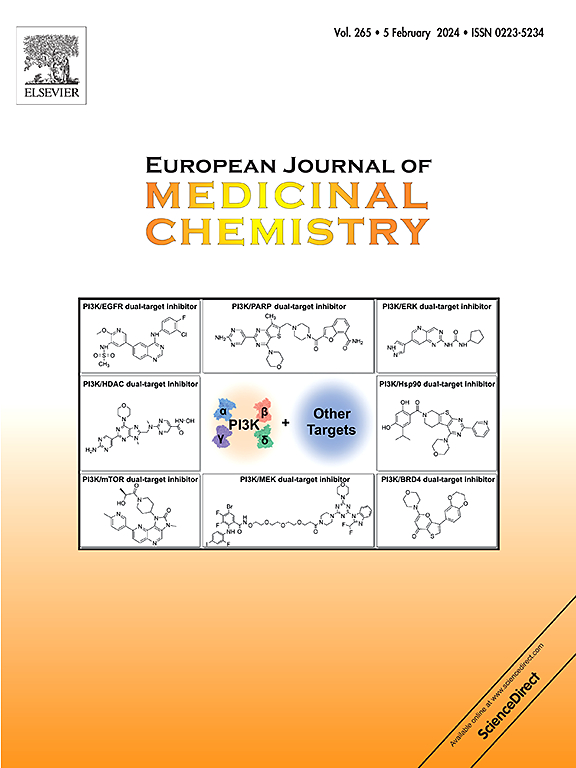1,3-Thiazole nucleus as promising molecular platform against antimicrobial resistance: a recent overview in drug discovery
IF 6
2区 医学
Q1 CHEMISTRY, MEDICINAL
引用次数: 0
Abstract
Antimicrobial resistance (AMR) has emerged as one of the foremost public health threats of the 21st century. The progressive decline in the efficacy of conventional antibiotics, combined with a scarcity of new drug classes approved in recent decades, has created a critical and alarming scenario. In this context, new biological, chemical, and artificial intelligence tools have played a fundamental role in supporting the discovery of compounds aimed at improving safety, efficacy, and broad-spectrum activity, addressing both AMR and the high costs associated with drug development. Recent data from the World Health Organization (WHO) highlight a list of priority pathogens intended to guide efforts in the search for new therapeutic options. Most compounds currently in preclinical and clinical development are small molecules with direct mechanisms of action. Within this landscape, the search for new molecular scaffolds has focused especially on derivatives of natural compounds and synthetic heterocyclic structures. Among these, derivatives containing the 1,3-thiazole core have stood out due to their synthetic versatility and ability to interact with various bacterial molecular targets. This review provides a comprehensive overview of different classes of thiazole derivatives with demonstrated activity against multidrug-resistant bacterial strains. Their mechanisms of action, relevant chemical, and pharmacological properties, as well as methodological approaches applied to the discovery of these bioactive compounds are discussed highlighting their potential in the development of new therapeutic alternatives to combat bacterial resistance.


1,3-噻唑核作为抗微生物药物耐药性的有前途的分子平台:药物发现的最新综述
抗菌素耐药性(AMR)已成为21世纪最重要的公共卫生威胁之一。传统抗生素疗效的逐渐下降,加上近几十年来批准的新药种类稀少,造成了一种危急而令人担忧的局面。在此背景下,新的生物、化学和人工智能工具在支持发现旨在提高安全性、有效性和广谱活性的化合物方面发挥了重要作用,解决了与药物开发相关的抗菌素耐药性和高成本问题。世界卫生组织(世卫组织)最近的数据强调了一份重点病原体清单,旨在指导寻找新的治疗方案的努力。目前在临床前和临床开发的大多数化合物都是具有直接作用机制的小分子。在这一领域,寻找新的分子支架尤其集中在天然化合物的衍生物和合成杂环结构上。其中,含有1,3-噻唑核心的衍生物因其合成通用性和与各种细菌分子靶点相互作用的能力而脱颖而出。本文综述了不同类型的噻唑衍生物对多重耐药菌株的活性。讨论了它们的作用机制,相关的化学和药理学性质,以及用于发现这些生物活性化合物的方法学方法,强调了它们在开发新的治疗方案以对抗细菌耐药性方面的潜力。
本文章由计算机程序翻译,如有差异,请以英文原文为准。
求助全文
约1分钟内获得全文
求助全文
来源期刊
CiteScore
11.70
自引率
9.00%
发文量
863
审稿时长
29 days
期刊介绍:
The European Journal of Medicinal Chemistry is a global journal that publishes studies on all aspects of medicinal chemistry. It provides a medium for publication of original papers and also welcomes critical review papers.
A typical paper would report on the organic synthesis, characterization and pharmacological evaluation of compounds. Other topics of interest are drug design, QSAR, molecular modeling, drug-receptor interactions, molecular aspects of drug metabolism, prodrug synthesis and drug targeting. The journal expects manuscripts to present the rational for a study, provide insight into the design of compounds or understanding of mechanism, or clarify the targets.

 求助内容:
求助内容: 应助结果提醒方式:
应助结果提醒方式:


